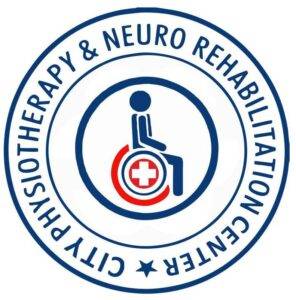Living with Paralysis: Cures, Therapies, Exercises, and More
Living with paralysis presents unique challenges, affecting mobility, independence, and quality of life. While a complete cure may not yet exist, various therapies, exercises, and technologies offer hope and improvement. Rehabilitation programs focus on enhancing strength, flexibility, and function, tailored to individual needs. Advanced medical interventions like stem cell therapy and nerve stimulation show promising results in restoring nerve function. At CityPhysiotherapyPune, we provide assistive devices and adaptive equipment to empower individuals in their daily tasks. For paralysis treatment in Pune, our dedication to ongoing research and advocacy endeavours strives to unlock innovative treatments, foster resilience, and enrich the lives of individuals with paralysis.
Paralysis:
Paralysis refers to the loss of muscle function in part of the body, often due to damage to the nervous system. It can be partial or complete, temporary or permanent, and can affect one limb, a specific area, or the entire body. Causes of paralysis vary widely, including spinal cord injury, stroke, nerve damage, and diseases like multiple sclerosis or cerebral palsy. Paralysis can result in loss of sensation, movement, and control over affected muscles, impacting mobility, independence, and daily life activities. Treatment focuses on managing symptoms, rehabilitation, and addressing underlying causes to improve function and quality of life.
Cures for Paralysis:
Stem Cell Therapy: Emerging research explores the use of stem cells to regenerate damaged nerves and tissues, potentially restoring function.
Nerve Stimulation: Techniques such as electrical or magnetic stimulation aim to activate nerves and muscles, promoting movement and function.
Surgical Interventions: Procedures like nerve grafting or nerve transfers can help restore communication between the brain and muscles.
Medications: Drugs targeting nerve regeneration or managing underlying conditions causing paralysis may alleviate symptoms.
Rehabilitation: Comprehensive therapy programs focus on improving strength, flexibility, and function through exercises, physical therapy, and occupational therapy.
Assistive Devices: Wheelchairs, braces, and other assistive technologies aid mobility and independence.
Adaptive Equipment: Tools and gadgets customized to individual needs help with daily tasks and activities.
Research and Development: Ongoing scientific advancements and clinical trials seek innovative treatments and breakthroughs in paralysis management.
Therapies for Paralysis
Physical therapy: focuses on improving strength, flexibility, and mobility through exercises and techniques tailored to individual needs.
Occupational therapy: Helps individuals relearn daily living skills and adapt to challenges caused by paralysis, such as dressing, grooming, and using assistive devices.
Speech therapy: Assists those with paralysis affecting the face or throat muscles to regain speech, swallowing, and communication abilities.
Electrical stimulation therapy: Involves the use of electrical currents to stimulate nerves and muscles, potentially restoring some function or reducing muscle atrophy.
Aquatic therapy: Utilizes water’s buoyancy to support movement and reduce strain on muscles, aiding in rehabilitation and improving mobility.
Massage therapy: Helps relieve muscle stiffness, spasms, and pain associated with paralysis, promoting relaxation and circulation.
Virtual reality therapy: Incorporates immersive virtual environments and interactive tasks to engage and challenge individuals in rehabilitation exercises, potentially improving motor function and coordination.
Cognitive-behavioural therapy: Addresses emotional and psychological aspects of living with paralysis, assisting individuals in coping with stress, depression, and adjusting to life changes.
Exercises for Paralysis Rehabilitation:
Passive Range of Motion Exercises: Gentle movements of affected limbs performed by a caregiver or therapist to maintain joint flexibility and prevent stiffness.
Electrical stimulation: Using electrical currents to stimulate muscles, promoting muscle contraction and preventing atrophy.
Aquatic Therapy: Exercising in water reduces the impact on joints and allows for easier movement, aiding in muscle strengthening and cardiovascular health.
Functional Electrical Stimulation: Applying electrical stimulation to specific muscles to assist with functional movements like walking or grasping objects.
Resistance training Using bands, weights, or resistance machines to strengthen muscles, improving overall function and mobility.
Cardiovascular Exercise: Activities like stationary biking or arm cycling to improve heart health, endurance, and circulation.
Balance and Stability Exercises: Utilizing balance boards, stability balls, or specific exercises to improve balance and reduce the risk of falls.
Stretching: Regular stretching helps maintain muscle length, flexibility, and range of motion, reducing muscle tightness and spasms.
Yoga: Incorporating these gentle, low-impact practices can enhance flexibility, strength, and body awareness.
Conclusion:
While paralysis presents unique challenges, there is hope and opportunity for improved quality of life through innovative treatments, therapies, and exercises. Dr. Suresh Suryawanshi our Paralysis doctor in Pune offers a variety of treatments, like stem cell therapy and specialized exercises. Our goal is to improve mobility and independence for people with paralysis, ensuring they lead fulfilling lives.


